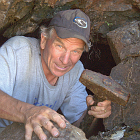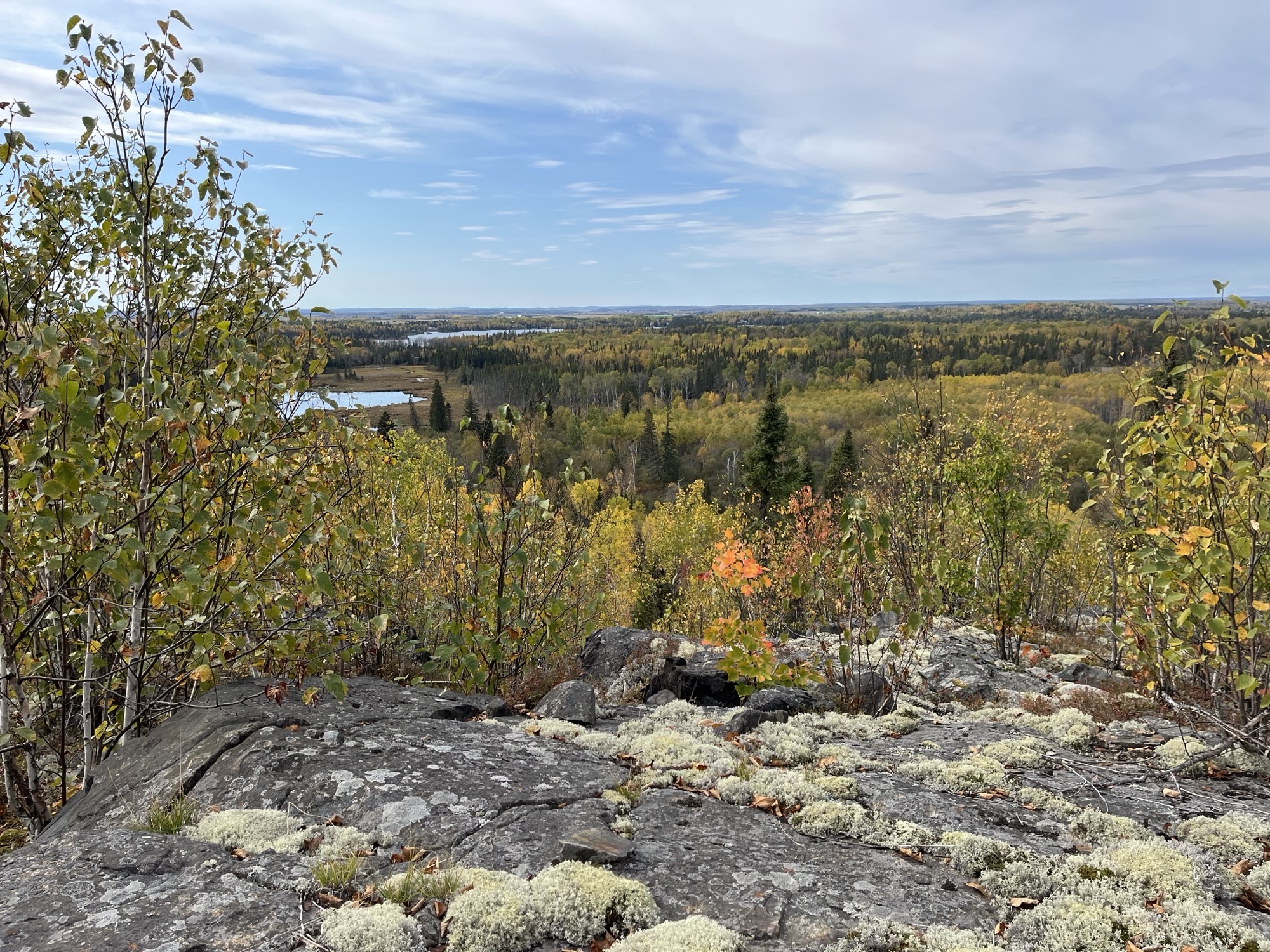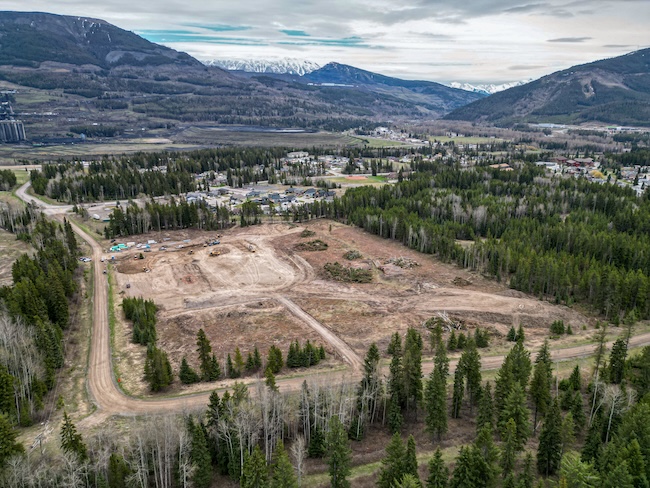Under the spell of geology

Bob Thompson doesn't mind getting a little dirty in pursuit of Mother Earth's secrets. — Photo courtesy Bob Thompson Bob Thompson is one of the harde
Bob Thompson doesn't mind getting a little dirty in pursuit of Mother Earth's secrets. — Photo courtesy Bob Thompson
Bob Thompson is one of the hardest working and best known geological contractors in British Columbia. At a recent technical conference, whenever he entered a room, walked down the hallway or was cited in a presentation, a chorus of "Bob!" would follow. He's congenial, buoyant and ever-so-slightly flashy in his appearance. But it's his deep geological understanding and enthusiasm for the industry that garner him the most notice.
Thompson’s formative years in Montreal seemed to be pointing toward a career in hockey until hockey scout Cliff Fletcher suggested to Thompson’s father that his son might be better suited in another field. This was the beginning of Thompson’s education in geology in the Maritimes, where as a grad student he “got the bug” working in the Canadian wilds.
“I fell under the spell of some of Canada’s great geologists of the time,” said Thompson, “people like Ray Price; Jim Fyles, who eventually became the deputy minister of mines (in B.C.); John Wheeler, who became the chief of the Geological Survey of Canada (GSC); John Reeser; and Atholl Sutherland Brown, who became the chief geologist for the B.C. Department of Mines. This was in the late ’60s, early ’70s, and it was a really exciting time for geologists.”
Thompson took a position with the B.C. Department of Mines in 1972, along with a raft of other young turks who would go on to make their names in the business. At the time, most of the Cordillera region of Canada was being mapped systematically for the first time, and Thompson said the new data was generating new ideas and theories throughout the industry. Geological technology was also taking off, giving those in the field information that they could only guess at previously. Suddenly, geologists were operating with a whole new conceptual framework, said Thompson, and this solidified his passion for the field.
He moved on to the GSC, where he spent the bulk of his career before retiring in 2007 and becoming an independent consultant for junior exploration companies and starting his own business, RIT Minerals (RITM) Corp. Thompson has found that working alongside the juniors—and particularly many of the prospectors who are on the ground—has reignited his passion for the industry.
“It’s like starting all over again,” said Thompson, “and it’s been wonderful for me—a real shot in the arm—to be so lucky to once again work with a group of outstanding people who give it the same sort of excitement and enthusiasm that I encountered as a youngster amongst some of the true greats of Canadian geology.”
Along with encountering what Thompson identified as a steep learning curve, he has also had to adjust to a quicker pace. He said that in order to survive and thrive in a competitive industry, the entrepreneurs have to be nimble, ready to act and always relevant to the market and the investor. He sees his role as helping to bridge the gap between the geologists and the investment community.
“I’m just having a lot of fun here,” said Thompson.
Thompson has observed a significant change in the exploration industry in the last 30 years, and he sees this as the reason for the evolution of the junior companies. When Thompson first began his career, the majors owned land preserves that they would explore—or not. Now, as Thompson said, the majors mine and they acquire, which has opened up the field (and fields) to hotshot explorers with a burning desire to make the next great discovery.
“The people who are generating the new ideas and testing them are the junior companies,” said Thompson.
Not only has the industry changed, allowing the juniors to flourish, but the exploration companies are now changing the way the majors operate. The speed at which a junior must operate in order to secure investment and interest from the companies that will eventually bring a mine to production has created numerous strong, swift operations with competitive business models. Thompson said one of the most successful business models that he has seen helps generate investment and mitigate risk—and create opportunities for the all-important joint venture.
“On one hand, they have what I call a flagship property, where they’re actually developing a resource—it’s like putting ounces in the bank,” he said. “You can’t mine it yet—it’s not big enough—but you’re trying to make it big enough that it can be mined. So you’re developing a bank account. At the same time, you’re looking around for a possible acquisition; it’s not going to be a great big ore body that only majors can bid on, but something of a size that allows you to create revenue flow. And while you’re doing that, you have a generative side—and this is where prospectors and geologists and ideas come to the fore—where you go out and generate opportunities.”
Thompson believes that in order for an idea in the industry to gain acceptance or for a project to generate investment, it must pass three tests. One, the idea must be defendable, supported by existing or testable data. Thompson said that’s the value—and the risk—of leading discussions at technical conferences, where feedback is almost instantaneous.
Two, the idea must be accessible.
“If only my friend the geologist can understand it, it’s not going to be of much value,” said Thompson. “It has to be accessible and understandable by the non-geologists, by the investment community—the people that are going to put the money into it. If they can’t understand it, your chances of success are pretty limited.”
Three, there must be a willingness to test it—to put one’s proverbial money and mouth in the same quarters.
Thompson said an example of an idea being put to the test is happening in southeastern B.C., where the Kimberley gold trend in the Purcell Mountains is being explored further.The lode gold feeding the creeks and streams in the area has so far eluded prospectors, but along with the certainty that they are narrowing in on it, the geology is showing unique aspects not present outside the belt. Persistence, investor support and understanding of the underlying data might be paying off for Eagle Plains Ltd., said Thompson, a company that has made some interesting discoveries with significant gold showings in the Iron Ranges.
Thompson is a busy man—and one of those lucky people who absolutely love their work. I ask him what it is that catches his imagination in his career.
“The group of people involved in this industry are, one, optimistic,” he said. “If you’re not an optimist, this is not the industry to be in. They tend to be very creative and very ingenious, and you need that ingenuity to be successful in this game, because Mother Earth does not give up her secrets easily.
“It’s an upbeat industry, even when things are tough. Who could live through all the downturns and then back into the up cycles? It takes a certain personality to keep persisting through the ups and downs—talk about salt of the earth.”
Drilling down
NameDr. Bob ThompsonFamilyWife and business partner, Renée; children Anne, Rob, John and RyleyCompanyRIT Minerals (RITM) Corp.Must readsAtlantic: Great Sea Battles, Heroic Discoveries, Titanic Storms, and a Vast Ocean of a Million Stories by Simon Winchester; non-fiction; Canadian history; “I like fiction to escape when I’m overloaded.â€Greatest career moment“I think the high comes from me watching and helping other people succeed.â€QuotableIf only my friend the geologist can understand (a concept), it’s not going to be of much value—it has to be accessible and understandable by the non-geologists . . . If they can’t understand it, your chances of success are pretty limited.




